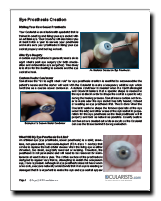Your Ocularist is an allied-health specialist that is trained in creating and fitting your eye socket with an artificial eye. Your Ocularist will also follow you at least twice a year to service your prosthesis and make sure your prosthesis is fitting your eye socket properly and looking its best.
After Eye Surgery
A custom eye prosthesis is generally made six to eight weeks post eye surgery (for both enucleation and evisceration eye surgeries). This delay is to allow for the swelling to subside and the eye socket to heal. For more info on post surgical care, see: Going Home After Eye Surgery
Custom Ocular Conformer
Sometimes the “six to eight week rule” for eye prosthesis creation is modified to accommodate the patient’s needs and the doctor will work with the Ocularist to make a temporary artificial eye which functions as a custom ocular conformer. A custom conformer is needed when the Ophthalmologist and Ocularist believe that a specific shape is needed in the eye socket in order to shape the socket a specific way during the healing process. Sometimes a custom conformer is made after the eye socket has fully healed, instead of creating an eye prosthesis first. This is done when the Ocularist wants to shape the fornices (pockets of the eye under the lids) and other areas of the eye socket in preparation for the eye prosthesis so the final prosthesis will fit properly and look as natural as possible. Usually custom conformers are created out of clear acrylic so the Ocularist can see the tissue behind it during evaluation.
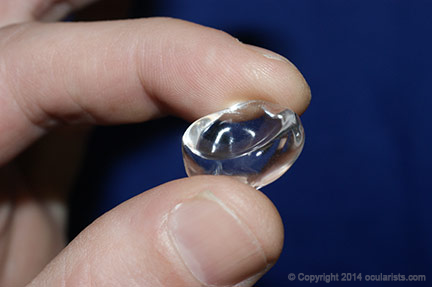
What Will My Eye Prosthesis Be Like?
An artificial eye (eye prosthesis, ocular prosthesis) is a solid, seamless, non-permanent, removable-implant (FDA class 1 device) that serves to replace the lost orbital volume when the living eye is either shrunken, too small, surgically removed or missing. Therefore, the prosthesis is not permanent and will need to be removed for maintenance at least twice a year. The visible surface of the prosthesis is designed to appear very lifelike, attempting to match the companion eye, if one is present.
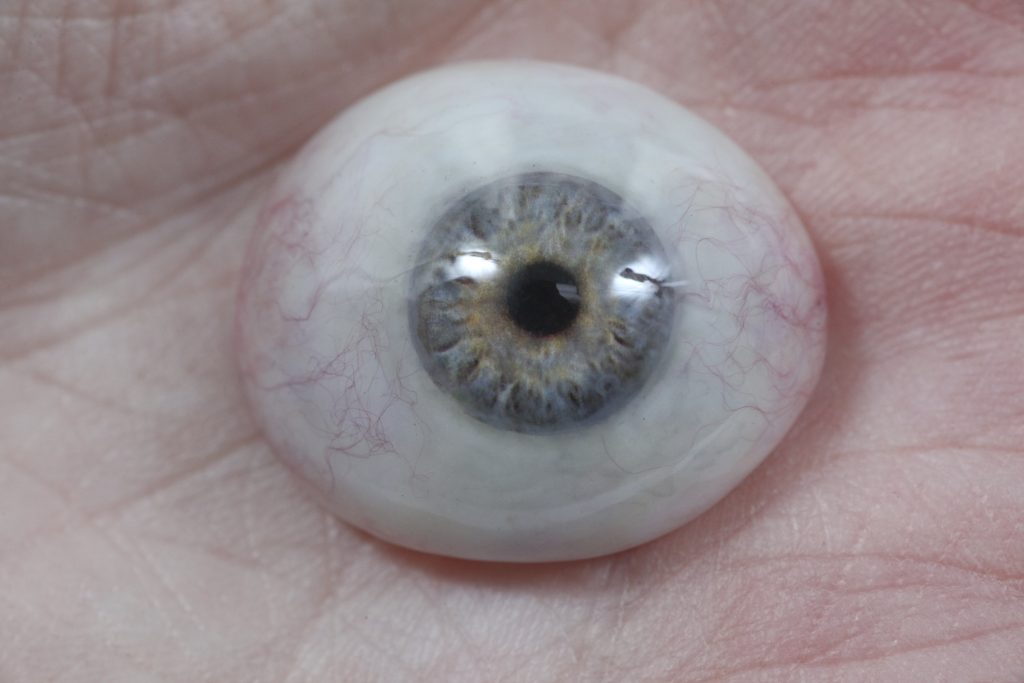
Although an eye prosthesis does not have vision of its own, everyone naturally understands that if an eye is missing or damaged that it is important to make the eye and eye socket appear like a healthy eye exists. We all look at others in their eyes, making “eye contact”, so the most obvious medical benefit to wearing an eye prosthesis is the restoration of natural facial anatomy – having the appearance of two healthy eyes. But what most people may not know (until they lose an eye) is that an eye prosthesis is also medically necessary for many reasons. Firstly, an eye prosthesis actually enables a sighted-companion eye to see and function better. This happens because the eye prosthesis helps eliminate the negative symptoms of “practical sympathetic-opthalmia”. This natural phenomenon is where the health of one eye or eye socket either helps or harms the health of the companion eye / eye socket. We have all experienced a minor version of this phenomenon when we get an eye lash or debris in one eye and then discover that both eyes water and find it difficult to see out of the eye that is not affected. Other medical necessities are: eliminating physical stress caused by facial imbalance of the eyelids, eliminating the recurrence of chronic infection characteristic of a compromised eye socket, halting anatomical asymmetry and disfigurement by inhibiting the skull and surrounding tissue from migrating into a recessed eye socket and, in the case of a child, enabling the skull, sinuses and facial tissue to grow proportionally and properly.
Contrary to popular understanding, eye prostheses are more shell-shaped then ball-shaped since they are designed to fit over the sphere implant or existing globe (eye) within the eye socket.
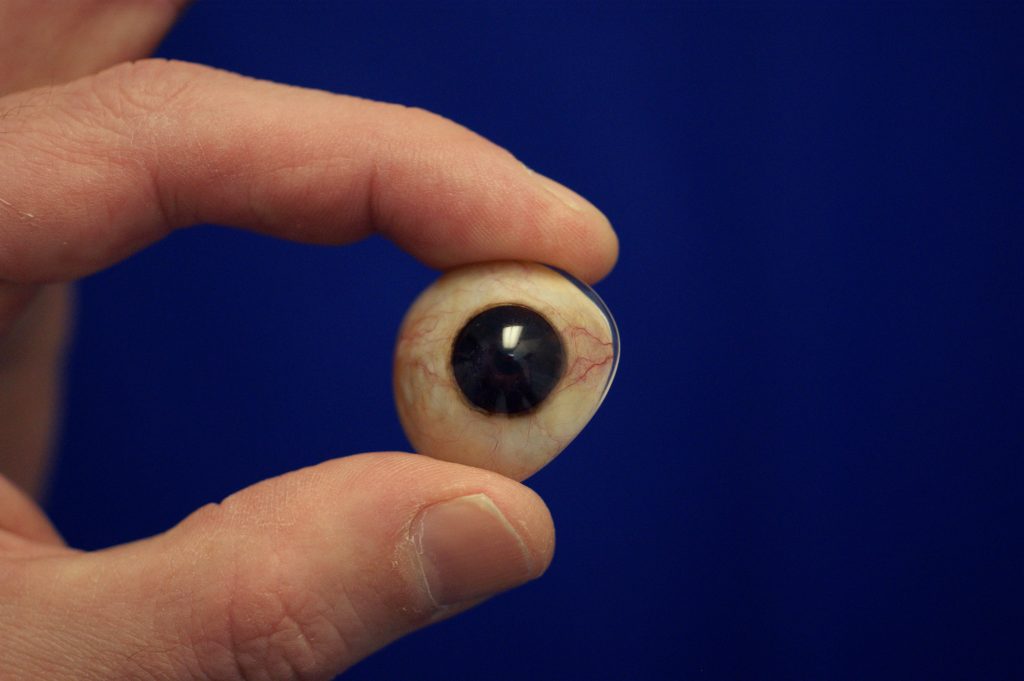
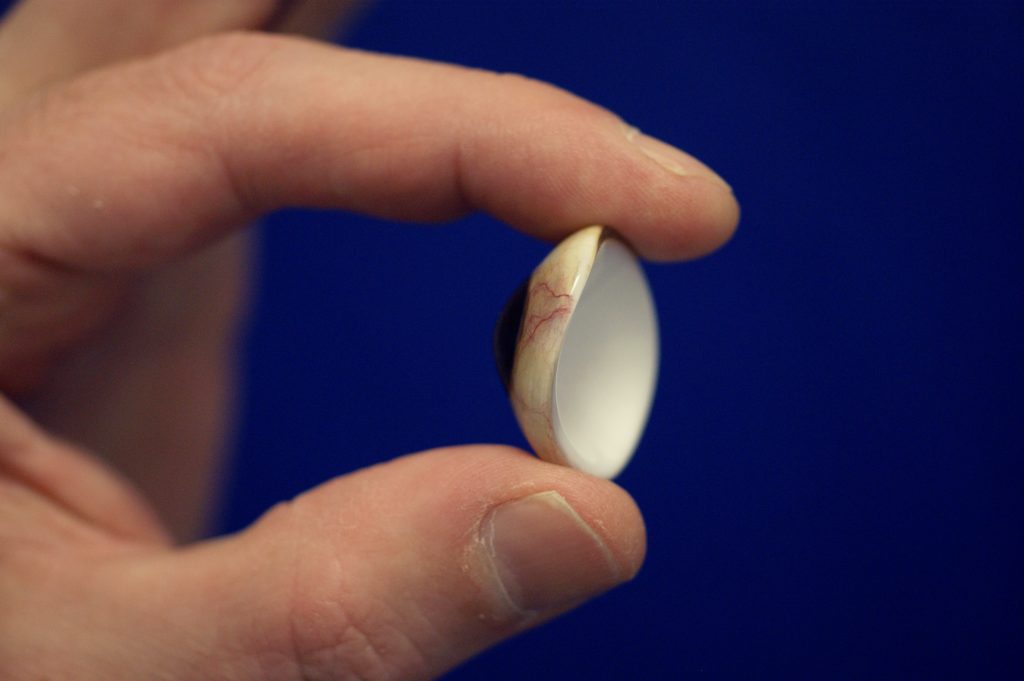
What are the specific steps involved in making an artificial eye?
Generally there are five steps involved in creating an Eye Prosthesis:
- Initial evaluation
- Impression molding of eye socket (which is often done during the evaluation visit)
- Prosthetic eye model fitting with iris and sclera ocular anatomy design
- Fitting of the completed eye prosthesis, and
- a two week follow-up appointment for post-fitting evaluation.
After the completion of these appointments, follow up visits are necessary to monitor the health of the eye socket and to polish/resurface the eye prosthesis. These visits are typically every six months, but frequency varies per patient.
How Long Will It Take to Make My Eye Prosthesis?
Each Ocularist has their own timeline and particular way of creating eye prostheses. Also, each individual has their own unique issues, thus time is different for each patient. Some clinics may offer prosthesis fabrication as fast as two days, however, typically 3 to 5 appointments are normally required and span over a one to four week period for most patients.

